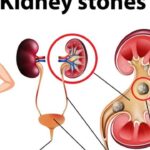When discussing heart health, terms such as “angina,” “heart attack,” and “stroke” are commonly mentioned. What is the difference betwen Angina, heart attack and stroke? It is important to understand these conditions because early identification of their signs can be a matter of life and death.
This article will define angina, heart attacks and strokes as related phenomena and distinguish between them. By the time you finish reading it, you will understand what each of these conditions is and thereby be able to more easily identify when something is wrong, possibly saving either your own future or somebody else’s.
Understanding Angina
Although less alarming, angina is not a condition to dismiss without considering the consequences. Put simply, angina is chest pain or discomfort that is due to restricted blood supply to the heart muscle.
Essentially angina is chest pain due to decreased blood flow to the heart muscle. It is a common symptom of coronary artery disease (CAD), one of the most prevalent forms of heart disease.
Types of Angina
For angina, there are usually two types which include; stable angina and unstable angina. One is stable angina which is often related to physical exertion or emotional stress and may follow a regular pattern.
If you experience stable angina, you may find that the pain disappears after resting or administering drugs like nitroglycerin. You can look at it as a signal from your heart that it is still working properly even if it is already overworked.
Unstable angina is considered more unpredictable and dangerous. Pain may occur suddenly even while you are at rest. This may mean that a heart attack could happen soon; this form of angina should not be ignored since an individual experiencing new or worsening chest pain which lasts for over few minutes is not safe.
Characteristics of Angina
For many people angina appears to show up as compressing sensation inside the chest or bricks being pressed against one another or weight in the chest. Some say it feels like being squeezed by someone else while laying down.
Angina discomfort could as well extend from your arms to neck or jaw backwards. Though angina shares some symptoms with heart attacks , it typically does not lead into permanent damage of heart muscles if it does not culminate in coronary artery disease.
Angina Causes
Angina mostly arises from arteries constriction or blockage occasioned by atherosclerosis – where plaque is formed in them and hampers blood flow. The risk factors are; smoking, high cholesterol levels, high blood pressure, diabetes and sedentary lifestyle that ultimately cause angina.
Treatment and Management
The treatment of angina frequently entails lifestyle adjustments like smoking cessation, dietary modifications among others pertaining to increasing exercise.
Beta-blockers, calcium channel blockers are some of the medications used in treating angina since they facilitate heart’s blood pumping. In circumstances where it’s severe, angioplasty or placing stents may however need to be done on patients so that their blood vessels are expanded thereby making them improve their circulation.
What Is a Heart Attack (Myocardial Infarction)?
As for heart attack, these happens when a part of the heart lacks blood supply completely. This condition, normally caused by blood clot, stops oxygen-rich blood reaching the heart muscles thus leading them to die hence causing permanent damage.
What is a Heart Attack?
When a coronary artery is abruptly blocked it is referred to us heart atack. Generally, a blood clot usually precipitates this sort of blockage which is as a result of dislodged plaque containing fats and cholesterol among other substances found in the walls of arteries. The final outcome is death of heart muscles due to lack of oxygen.
Also read: Can A Loop Recorder Detect A Heart Attack?
Symptoms of a Heart Attack
Heart attack symptoms can vary, but the most common signs include:
- Intense chest pain or discomfort, which may spread to the arms, back, neck, or jaw.
- Shortness of breath.
- Nausea or vomiting.
- Cold sweat.
- Lightheadedness or dizziness.
These symptoms be experienced abruptly while at times may take long hours or even days to manifest. It should be noted that chest pain and shortness of breath can differ in men from women. However, ladies might experience less noticeable symptoms like fatigue, nausea or backache.
Causes and Risk Factors

According to WebMD, heart attacks usually result from atherosclerosis with fatty deposits clogging up arteries causing blood flow to be blocked or reduced. The risk factors for angina are similar to those for heart attack: smoking, high cholesterol, high blood pressure, family history of heart disease and diabetes.
Treatment and Recovery
A heart attack necessitates immediate treatment. In case of any symptoms, call emergency services or contact people around you. Among the most effective approaches are CPR, defibrillation, or aspirin to reduce blood clotting tendency.
Doctors at hospitals can undertake such methods as angioplasty in order to widen clogged arteries or coronal artery grafting for blood restorations.
There is what is called cardiac rehabilitation after heart attack; an instance encompasses supervised exercise programs that are intended not only to educate patients but to help them evade future risks too. Additionally blood thinners or beta-blockers may be recommended as a way of achieving long-term heart health.
What Is a Stroke?
The brain is the main organ that is affected by a stroke unlike angina and heart attacks. When blood flow is stopped to the brain by either a blockage known as ischemic stroke or ruptured vessel referred to as hemorrhagic stroke a stroke occurs. Brain cells die because they begin to lack oxygen; this leads to brain damage.
Types of Stroke
The two main types of strokes are:
Ischemic Stroke: This is the most frequent type of stroke and is generated by a blood clot that blocks an artery in the brain. It constitutes about 85% of all strokes.
One of those instances of stroke happens when a blood vessel in your brain breaks. It is less common but usually more lethal.
Stroke Symptoms
FAST is an acronym that describes the main symptoms of a stroke:
- Facial drooping- One side of the face might droop or have numbed sensation
- Arm weakness- The patient may not be able to lift one or both arms
- Speech difficulties- Their speech may sound slurred and hard to grasp
- Time to call emergency services-Call 911 right away if any of these signs appear on someone else.
Other signs of having another hemorrhagic incidence include moments of sudden madness or confusion, vision abnormalities and bad headaches as well as problems with walking or maintaining balance.
Stroke Causes and Risking Factors
Usually the risk factors for stroke and heart attacks are similar like high blood pressure, smoking, high cholesterol levels and diabetes. Atrial fibrillation (irregular heart rhythm) also increases the risk of a stroke significantly.
Stroke Management and Healing
Fast action is required in the treatment of ischemic stroke. If administered within a few hours from the start of stroke, blood flow can be recovered through the use of clot-busting drugs such as tPA. In other cases, a surgery might be needed to get rid of the clot or fix a broken blood vessel.
After a stroke, individuals often require physical, occupational and speech therapies for purposes of regaining the lost functions.
What is the difference between angina, heart Attack, and stroke
There may be some connections between angina, heart attacks and strokes in the context of the blood flow problem but they have different intensities as well as affect different body parts.
Angina and heart attack: Angina signals that there is not enough oxygen reaching the heart muscle and so it is only a warning sign with no permanent damage while heart attacks is when blood does not flow at all leading to unnatural death of tissues within the heart.
Heart Attack and Stroke: Heart attack is about the heart, but stroke affects the brain. In both cases there are blocked off blood ways by arteries but for the latter it affects brain cells unlike the former which causes damage on heart muscles.
Risk Factors and Prevention Strategies Overlapping Each Other
There are numerous risk factors that lead to the occurrence of heart attacks and strokes as well including:
Elevated blood pressure
Smoking
Diabetes
Also read: Is Feeling Sleepy After Eating A Sign Of Diabetes?
Poor diets with too much fat or cholesterol in them would increase your chances of getting either condition if not both while taking into consideration your current weight status.
Even low activity levels could also bring some changes respectively making it exceedingly easy for an individual predisposed genetically towards either one of these health complications but also at higher risks when others fail too alike having said enough about why you should worry about these diseases together instead separately.
When it comes down on preventing yourself against one thing only without considering other related aspects such as family history concerning this problem area while life span data testify against this hypothesis.
When to Seek Medical Attention
Recognizing the symptoms of angina, heart attacks, and strokes early can save your life. If you experience chest pain that doesn’t go away with rest, call for emergency help immediately. If you or someone else shows signs of a stroke, like facial drooping or arm weakness, don’t wait—time is critical. Call 911 and get help as soon as possible.
Conclusion
Cardiovascular conditions are the root cause of angina, heart attacks as well as strokes but they present varied manifestations in the body.
Angina acts as a red flag for persons whose hearts demand urgent attention while heart attack is seen as an emergency situation where some part of the muscle tissue in the heart dies. In contrast, stroke mainly affects brain tissue and might result into either long-term disability or death.
The knowledge of these differences, spotting their symptoms and being proactive help protect your heart and brain from illnesses. Remain updated, dodge foolish lifestyle choices, thus any instance you feel something is wrong contact a physician immediately.



